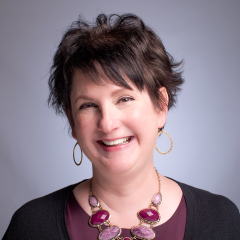Sometimes the Purple Cow Hurts
by Lisa Sisley on August 3, 2012
Seth Godin, marketing guru, coined the term “Purple Cow” to explain the notion that in marketing, you have to find some way to stand out from the herd. A purple cow would be distinct from all the brown cows. We apply this to community marketing projects by helping cities think through what makes them unique.
All communities change over time, and change isn’t easy. However, market forces often bring changes that, while tough to live through, can eventually make a community more agile and competitive. When New Boston comes in to help with branding, we urge residents to confront purple cows that may be fraught with pain, change, and public dispute, but can ultimately become a tremendous strength.
Case in point: Garden City, Kansas. In 1981, the first large beef packing plant came to Garden City, which was a huge economic boon. The plant also quickly triggered emigration of new residents from Mexico and Viet Nam. Since then, people from many Asian, African, and Central and South American countries have swelled the population and contributed to the local economy.
Did Garden City have growing pains in the early years? You bet.
Have they now become a national model for how a progressive small city quickly accommodates and welcomes new waves of culturally diverse residents? Absolutely.
Is their economic success quantified by the fact that sales tax revenues and population both increased during the worst days of the recent recession? Uh huh.
This international ethos is Garden City’s purple cow. It’s what distinguishes this community from every other mid-sized, Midwest city. Initially, some people weren’t comfortable with a multicultural emphasis for branding. However, through public meetings, key-person interviews, paper voting and online feedback, Garden City residents reached a consensus to embrace their uniqueness.
Now Garden City sports an NBCG-designed logo that features a native Southwest Kansas plant, the yucca. Its blades are multicolored to signify the cultures that join to create the community. The tagline we proposed, “The World Grows Here,” evokes internationalism, economic development and agriculture.
What scares your community? What challenges “the way we’ve always done things”? What do people write cranky letters to the editor about? Chances are, you’re looking at your purple cow right there.

